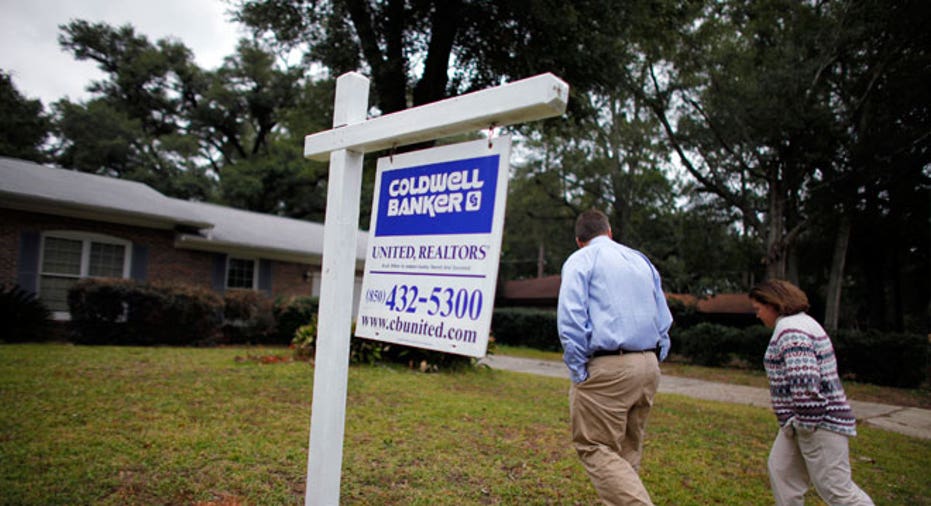Homebuyers Still Find Down Payment Assistance

The days of easy credit are gone, but homebuyers can still get mortgages with little to no money down if they know where to look.
From down payment assistance grants to interest-free second mortgages and other special mortgage programs, there is a growing number of options for people who want to buy a home without a down payment. But these are not the no-questions-asked type of loans that buyers found during the housing boom, says Rob Chrane, president of Down Payment Resource, which provides information about down payment programs across the country.
"You still need to have decent credit, and all of your income has to be thoroughly documented," he adds.
Sometimes help is available
Often, potential buyers have what it takes to qualify for a mortgage but haven't managed to save enough for a down payment or simply don't want to spend all of their savings on a down payment, Chrane says. Meanwhile, money from the many types of down payment assistance programs, available through state and local housing agencies, goes unused because buyers think they don't qualify for help.
"When you think of down payment assistance, you think of borrowers that are income challenged, but these are not just for low-income folks," says Deborah Holloway, a loan specialist at Shelter Mortgage Co. in Melbourne, Fla. "They are for working people who make a decent income but don't have enough to save for a down payment."
Income requirements and how much you get
Buyers can earn as much as 120 percent to 140 percent of the median area income and still qualify for some down payment assistance programs.
For instance, a buyer living in Orange County, Calif., can earn nearly $98,000 a year and qualify for a grant of up to 5 percent of the purchase price of the home, according to the requirements of one down payment assistance program available in the state.
"This is a no-strings-attached grant," says Scott Schang, branch manager at Broadview Mortgage in Long Beach, Calif. "Getting qualified for a mortgage (through one of the lenders participating in the program) automatically qualifies you."
Delayed repayment loans
A buyer in Melbourne, Fla., earning as much as $73,480 a year can qualify for $10,000 in the form of an interest-free loan that doesn't have to be repaid until the borrower sells the house, Holloway says.
On average, buyers get about $5,000 to $20,000 in assistance, depending on the program and the state where they live. But a few programs for buyers in high-cost areas go as high as $100,000, Chrane says.
Interest-free loans
Many of the programs offering down payment assistance to homebuyers are structured as a second, silent mortgage that is repaid only when the house is sold or the mortgage is paid off, Chrane explains. The money comes from a variety of initiatives by state and local housing authorities, including bond programs, he says.
While some programs are designed to work in conjunction with FHA loans, others allow the buyer to get a conventional mortgage. Often the program requires the buyer to get a mortgage from a participating lender.
Where to find the programs
Housing authorities in each state normally list these programs and participating lenders on their website, Chrane says.
"The lender is definitely the starting place to see if you qualify," he says.
Not every lender likes to participate in down payment assistance programs because these types of loans are not as profitable, Schang says. But if you look hard enough, you'll be able to find a few lenders to choose from.
Lenders offering their own versions of low down payment loans
Some lenders have been coming up with their own programs to help first-time homebuyers get a home with a low down payment.
"One of the myths out there is a lot of first-time homebuyers feel as if there are no mortgage programs available for them if they don't have a large down payment," says Malcolm Hollensteiner, director of retail lending sales and production for TD Bank Group. "That's not the case."
TD Bank, he says, introduced a program last year for buyers who want to buy a home with a low down payment but don't want an FHA mortgage. FHA loans generally allow buyers to put as little as 3.5 percent down, but the cost of mortgage insurance premiums for FHA loans has increased dramatically, making the loans too expensive in some cases, he says.
Also for conventional mortgages
The private mortgage program allows buyers to get a conventional mortgage with 5 percent down, and 2 percent can be a gift, he says. Generally, conventional mortgages require the borrower to show that at least 5 percent of the money came from the borrower's own funds.
Fannie Mae also has a loan program, HomePath, that allows buyers to purchase a home with 5 percent down, without having to pay for mortgage insurance. With HomePath, all of the down payment can be a gift, a grant or a loan. The downside is that the loan can only be used to purchase Fannie Mae-owned foreclosed properties.
Are these no- and low-down-payment loans safe?
Low- and no-down-payment loans have had a somewhat bad reputation since the mortgage meltdown. But Chrane says assistance programs designed to help buyers with little or no down payment are much safer than the loans that caused the crisis.
"There's a big difference between these programs and the programs that had tremendous default rates," Chrane says. "Those were subprime loans where you didn't have to document anything."
Copyright 2014, Bankrate Inc.